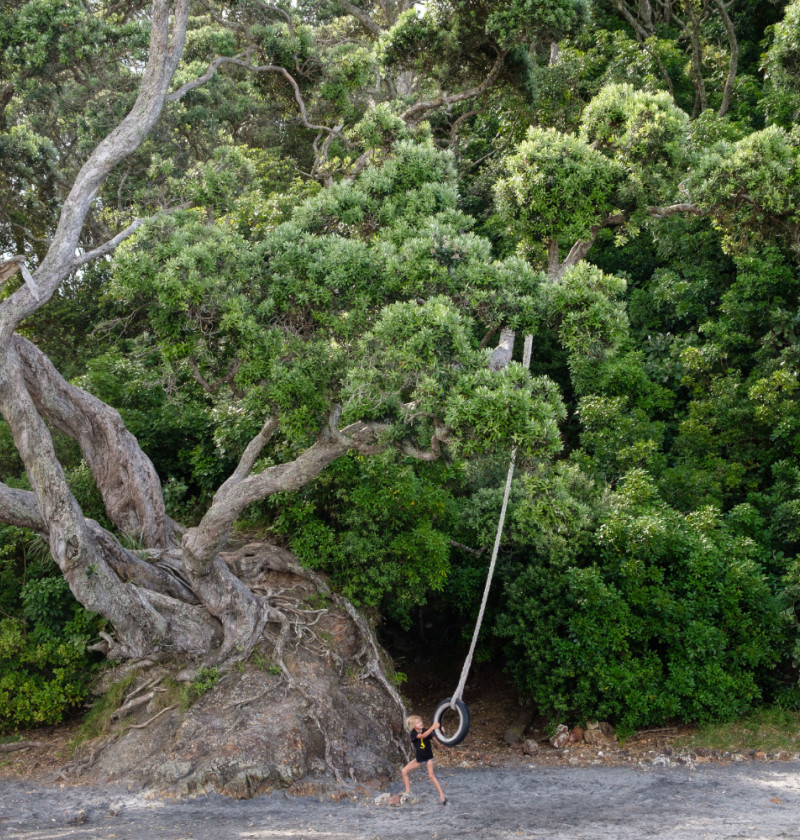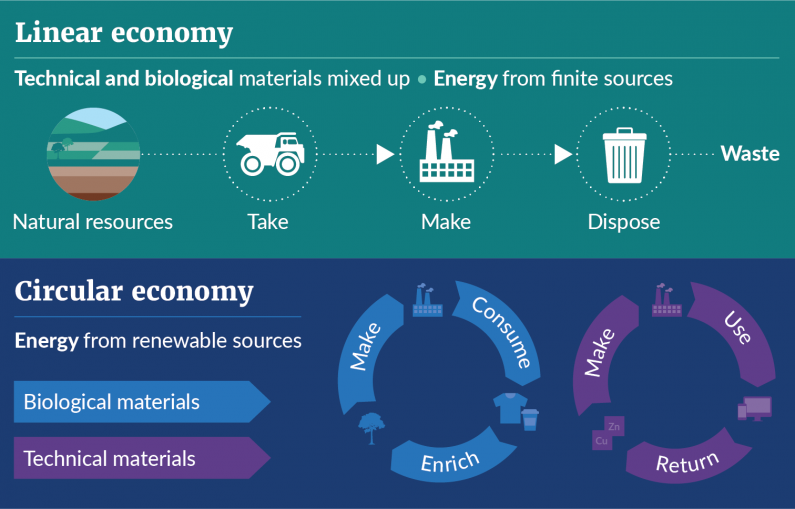Chapter 9 Circular economy and bioeconomy


Download a PDF version of this chapter [PDF, 979 KB]
By 2050, Aotearoa New Zealand will have a circular economy with a thriving bioeconomy that seizes the opportunities from global trends and shifting consumer preferences.
Key outcomes include:
Moving to a circular economy with a thriving bioeconomy will support our economic and social wellbeing and lead to a better balance between the emissions we generate and the environment’s ability to store these.
Moving to a circular economy with a thriving bioeconomy is essential to meeting our emissions budgets and our 2050 targets. In addition to helping us reduce emissions, it will create new opportunities (including new jobs such as in resource recovery, bioproducts and design), drive innovation, reduce the amount of waste we produce, and can result in cost savings for households and businesses.
This transition will require us to change the way that we think about – and use – resources.
In a circular economy, we design out waste and pollution, keep resources in use for as long as possible, then recover and regenerate products and materials at the end of their lifecycle. Protecting and regenerating natural systems is key to a circular economy, as is delivering equitable and inclusive outcomes.

Approximately 45 per cent of global emissions come from making products. Of these emissions, up to 80 per cent are created in the design stage.* Moving to a more circular economy is an opportunity to rethink how we design and use our resources to meet our material needs, such as shelter, mobility and nutrition.
Globally, many businesses and governments are adopting circular practices to improve efficiency, support climate goals and meet growing demand for low-emissions and low-waste products and services. A study commissioned by the Sustainable Business Network estimated that a more circular Auckland could reduce emissions by 2.7 Mt CO2-e and add NZ$8.8 billion in additional economic activity by 2030.**
A more circular economy in action can include:
* Ellen MacArthur Foundation website;
EU Science Hub Sustainable Product Policy web page on the European Commission website
** A circular economy for Auckland - scoping the potential economic benefits [PDF, 640 KB]
Aotearoa New Zealand’s natural resources, which make up our bioeconomy, provide a significant competitive advantage as the world moves away from fossil fuel-based products to bio-based materials, products and chemicals.
Bioeconomy describes the parts of the economy that use renewable biological resources to produce food, products and energy.
Scion estimates that the bioeconomy could create an extra NZ$30 billion for our economy and help reduce emissions by 12.5 Mt CO2-e by 2030.*
We need an integrated approach to sustainably manage our biological resources that supports the transition of workers and businesses to a low-emissions economy and meet the needs of rural communities.
* Right tree, right place, right purpose: Scion strategy to 2030 [PDF, 1.7 MB]
Ngawha Innovation and Enterprise Park (Ngawha Park) is founded on circular economy principles, enabling it to operate with low emissions. The development uses and reuses the Northland region’s abundant raw materials – extracting maximum value from them before returning them to Papatūānuku (the earth). This regenerates the whenua (land) and protects our awa (rivers).
Ngawha Park is a 240-hectare green fields development nestled in the heart of Northland, just east of Kaikohe. It converts and restores land that was used for dairying into a centre for value-added manufacturing and innovation.
The park is a collaboration between organisations representing physical development, economic and business development, education and training, research and development, resource recovery, renewable energy, mana whenua, and local business and community groups.
Emissions reductions measures proposed at the site include:
This plan outlines key actions for stepping Aotearoa towards a circular economy and a thriving bioeconomy that delivers equitable and inclusive outcomes.
Actions to create greater circularity and develop our bioeconomy will also need to uphold Te Tiriti o Waitangi, apply te ao Māori and mātauranga Māori principles, and protect Māori interests. This will require meaningful engagement with Māori. Actions should also align with the Te Tumu mō te Pae Tawhiti [Te Puni Kōkiri website] cross-agency work programme led by Te Puni Kōkiri.
Within the first emissions budget period, the Government will start the work needed to deliver a circular economy and bioeconomy strategy (the Strategy). This will align with the Waste Strategy’s vision and principles and will include the five areas outlined below.
Meaningful engagement – including with Māori – is essential to ensuring that we move to a circular economy in a way that delivers equitable and inclusive outcomes. It will also improve our understanding of the impacts and opportunities of a circular economy and bioeconomy.
The Strategy will enable the public sector to lead by example; it will align with the Carbon Neutral Government Programme as well as other programmes to reduce emissions, pollution and waste.
The Strategy will consider the skills, public and private investments, and innovation needed to achieve a shared vision and accelerate the move to a circular economy and thriving bioeconomy by:
The Strategy will identify how regulatory systems and business environments can enable this shift by:
The Strategy will uphold Te Tiriti and be informed by te ao Māori and mātauranga Māori. Supporting actions will need to be developed collaboratively and provide for – and protect – the interests of Māori. It will also be important to reflect the local context and connections between systems
This part of the Strategy will focus on establishing a baseline of natural resources and an analysis of supply and demand. It will also develop a framework for a bioeconomy that supports the wellbeing of all New Zealanders, and aligns with Te Mana o Te Taiao – Aotearoa New Zealand Biodiversity Strategy 2020 [Department of Conservation website].
Aotearoa can learn a lot from other countries. However, we also need to build our own evidence base to develop circular approaches that will work in our unique context. The Government will:
The Government will build on public and private sector achievements to unlock the potential of a circular economy. Examples include:
The Government will investigate opportunities to support industry-led and regional programmes that enable businesses to adopt circular economy models. For example, the Government has provided funding for the circular Ngawha Innovation Park (see case study in this chapter).
The Government will consider partnering with key industry, Māori and local government stakeholders to launch a circular economy hub, to support deployment of circular practices in Aotearoa.
A circular economy hub could include an innovation hub and demonstrate circular practices, such as resource recovery.
For more information about the innovation hub, see chapter 8: Research, science, innovation and technology. For more information about resource recovery, see chapter 15: Waste.
The Government will set up a work programme that is consistent with the bioeconomy objectives, the energy strategy, and takes account of the needs of rural communities. This will consider:
The Government will investigate ways to increase woody biomass supply to replace coal and other carbon intensive fuels and materials and stimulate private sector investment (see chapter 14: Forestry).
This action will build on existing research and development funding in this area, as well as potentially new initiatives to turn our bioresources into new bio-based products and biomaterials (eg, low-carbon wood products, marine derived pharmaceuticals)
Local government is a key player in moving to circular economy. Councils have a role to play in designing circular urban plans, enabling resource recovery and using procurement to design out waste and reuse resources in infrastructure building (eg, concrete). They will need to work with businesses to encourage them to move to circular business models and co-locate to form circular hubs. The circular economy and bioeconomy will need to be well coordinated for success – local governments are well-placed to do this at a local level.
The private sector has a key role to play in unlocking the significant potential of the circular economy and bioeconomy. We need business to design out pollution, make better use of resources and innovate circular solutions. It is the private sector who will provide biomass and seize the opportunities of the growing bioeconomy.

Chapter 9 Circular economy and bioeconomy
May 2022
© Ministry for the Environment